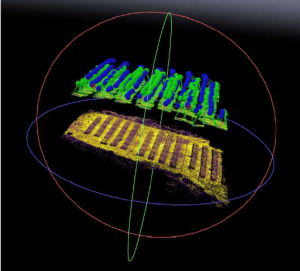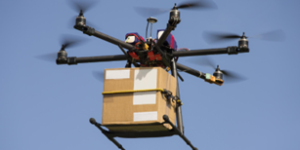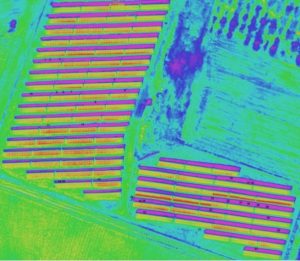Written by Margarita Kyrkou, surveyor and GIS specialist at Wattcrop.
The commercial adoption of drones is growing quickly, and the solar industry is no exception. Drones provide a practical solution for inspecting solar installations, from residential to utility-scale. They can be used to manage the entire design, construction and operation cycle of a system.
Drones support business efforts to avoid hazardous man-hours; reduce costs for maintenance, inspections, and repairs; and maximize energy production. Valuable use cases have been proven across pre-construction, commissioning, and operations & maintenance for not only the PV system itself, but also for surrounding infrastructure like utility lines, substations, and fencing. They are a useful tool as they collect data up to 50 times faster than manual methods and ensure greater safety.
How can Drones make your operations better?
The use of DRONES (UAV/UAS) / Unmanned Aircraft Systems (UAS), came to set new bases by significantly increasing the speed and accuracy of inspection, dramatically reducing the cost and risk of accidents during inspection, since the human factor is not directly involved.
Using drones in the solar industry both opens up new possibilities and replaces existing work. Without drones, inspections are typically completed manually. For utility-scale solar farms, this means either traversing hundreds of acres and conducting the painstaking process of inspecting thousands of panels by hand, or, more commonly, inspecting only a sampling of panels in an effort to identify systemic issues. In some cases, high-cost inspections by small plane may be used. Inspecting rooftop systems, of course, involves the hazards of sending workers onto rooftops.
With drones, you can complete inspections in a fraction of the time, saving costs while avoiding hazardous man-hours and getting better data.
Applications of Drones in PV Systems.
- Feasibility Study / Design Phase.
Investigating the feasibility of a project can be based on creating a 3D model of the area where the project is to be built. As well as a subsequent cost-benefit analysis, with as accurate data as possible.
UAV/UAS have the ability to collect accurate data, quickly and in large volumes. From this data, after processing by special programs, an accurate three-dimensional model of the area is obtained and important information such as the topography of the terrain and the routing of the electricity network can be extracted.

The Generated 3D Model
- Construction Phase.
In the construction phase, Drones can be used in different ways. A simple flight can be used to supervise the engineers and workers, especially in large-scale areas, and therefore the quality of the work being carried out can be improved.
Another application has to do with mapping the existing situation and general mapping. Essentially, the model is generated from a number of photographs of the actual situation.

Finally, UAV/UAS can be used in different ways. Large-sized machines have the ability to transport loads within the construction site, where access is difficult. There is also the possibility of installing a spraying system on the Drone, for cleaning inaccessible surfaces. Furthermore, to facilitate the process of laying cables, through the installation of a “guide” cable between the pillars.

Maintenance & Operation Phase.
Regarding to PV inspections, weather conditions play an important role in increasing the efficiency of a project, since usually only a few hours of the day are considered usable. In addition, data collection is carried out quickly and with increasing quantity and quality.
Aerial thermography of PV farms using drones is a modern way of monitoring the functionality of PV plants. Essentially, thermography measures the temperature radiated by the panels. This is achieved by using appropriate equipment such as infrared cameras which are installed on the drones.

The flexibility and widespread application of Unmanned Aerial Vehicles have introduced a safer and more efficient way of working, heralding a promising future of technology and innovation.

